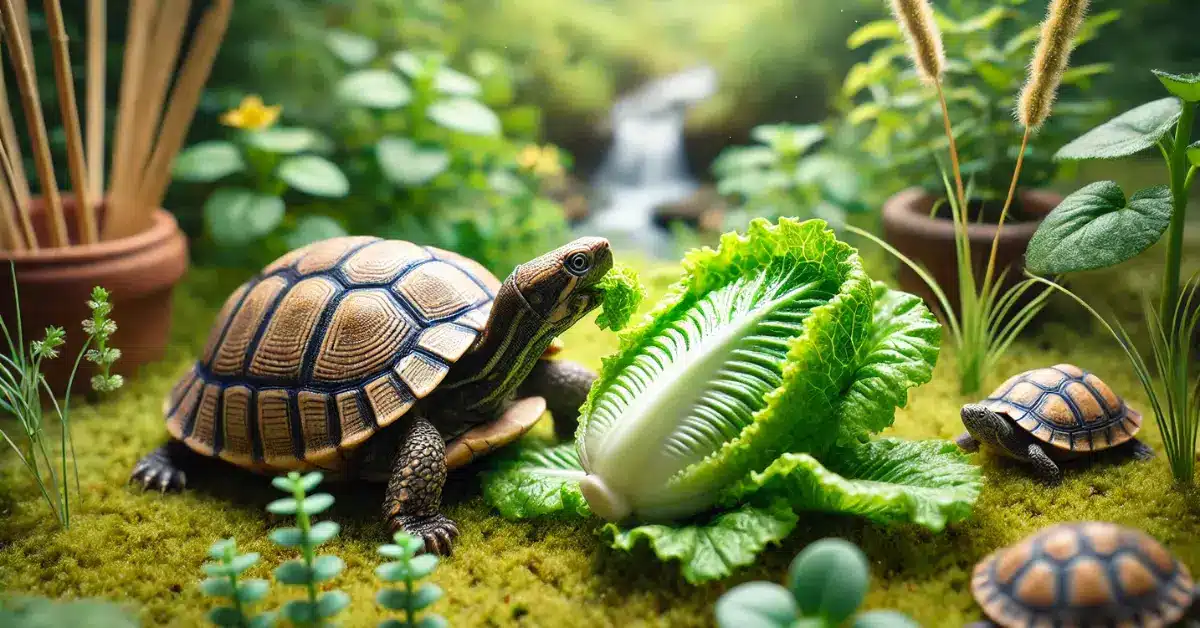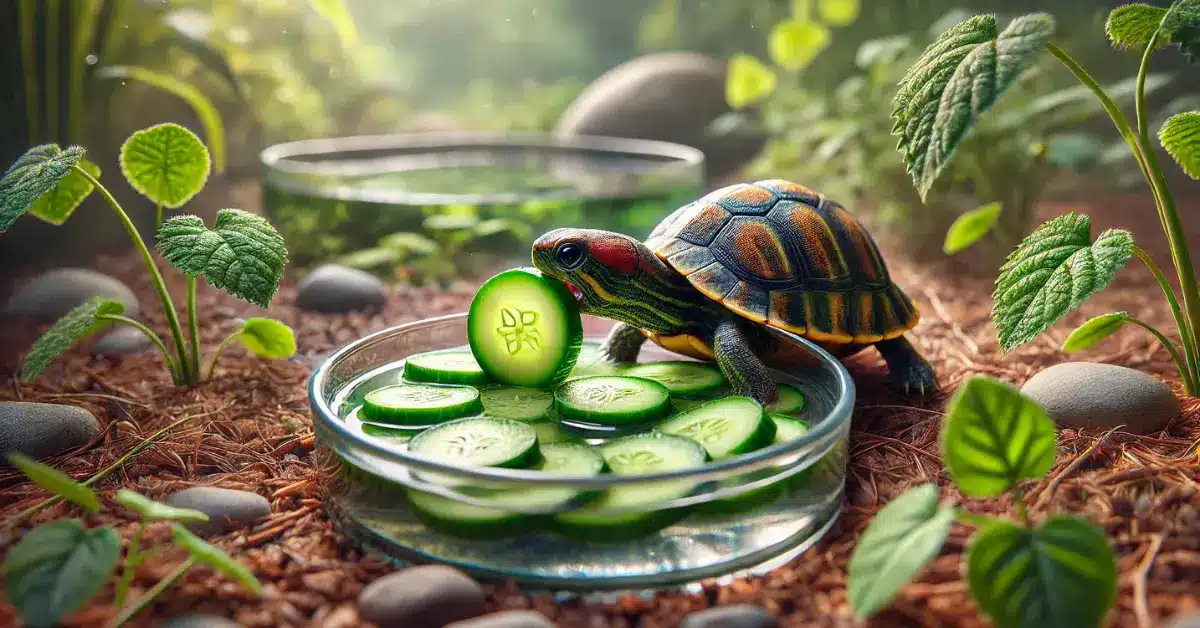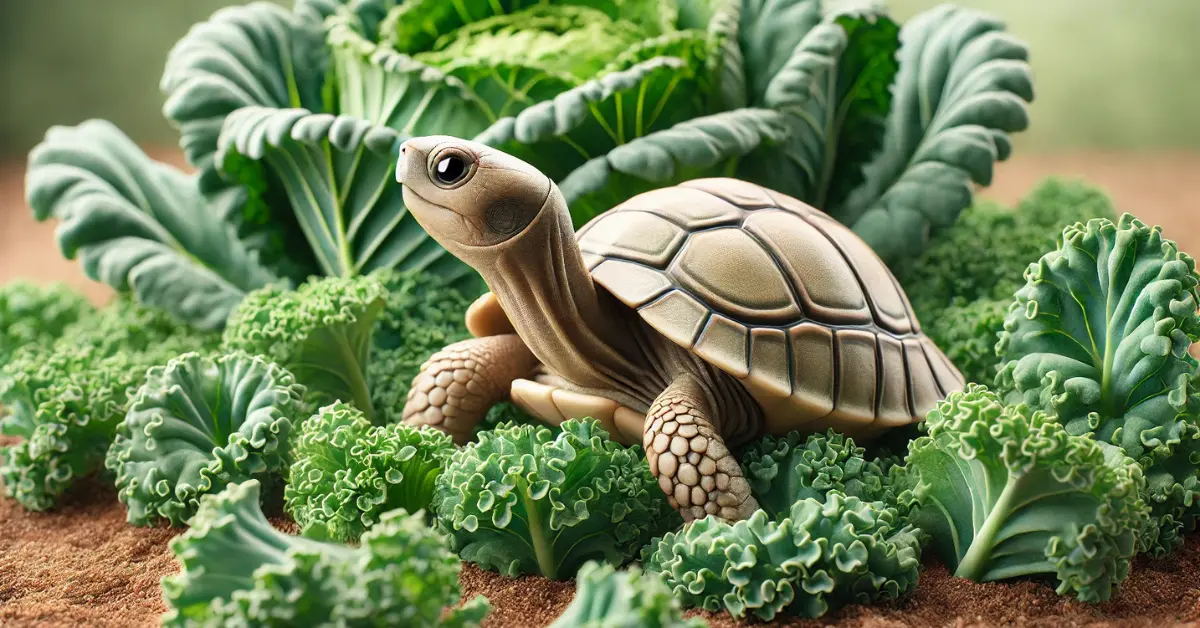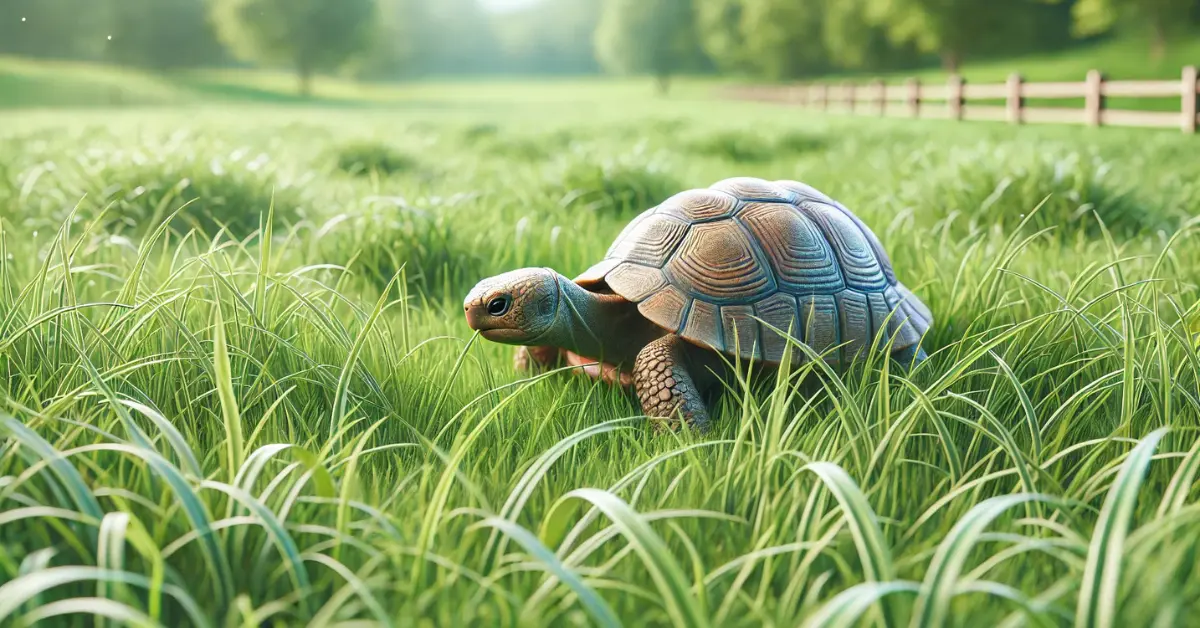If you want a Cumberland Slider Turtle as a pet, it’s important to know how to take care of it properly. Cumberland Slider Turtle Care means setting up a good home, giving the right food, and keeping your turtle healthy. This guide will help you learn how to make sure your turtle is happy and well-cared for.
Table of Contents
ToggleUnderstanding Your Cumberland Slider
Where They Come From and Live
Cumberland Slider Turtles come from the southeastern part of the United States. They love to live in slow-moving rivers, swamps, and ponds where there are lots of plants. They like warm water and soft, muddy areas where they can bask and eat.
What They Look Like and How Long They Live
These turtles are medium-sized and usually grow to be about 6 to 10 inches long. Their shells are usually green or brown with yellow patterns. They have a bright yellow stripe behind each eye and bands of light and dark on their legs.
Cumberland Sliders can live up to 30 years if they are well cared for. This means they are a long-term pet, so you need to be ready to care for them for many years.
How They Act
Cumberland Sliders are friendly and active. They like to explore and are curious about their surroundings. In the wild, they bask on logs or rocks to soak up the sun and spend a lot of time swimming.
If you have a Cumberland Slider as a pet, they need a home that looks like their natural habitat. This means having a tank with water to swim in and a dry area to bask. They also enjoy playing and interacting, so giving them things to do will keep them happy.
Creating the Perfect Home for Your Slider
Tank Size and Setup
To keep your Cumberland Slider happy and healthy, you need a spacious tank. Aim for at least a 40-gallon tank for one turtle. Larger is always better, as it gives your turtle more room to swim and explore. The tank should have both a water area for swimming and a dry area for basking.
Use a secure lid to prevent your turtle from escaping. Make sure the tank has a strong, stable stand to support its weight.
Water Quality and Filtration
Clean water is crucial for your turtle’s health. Install a high-quality filter to keep the water clean and clear. The filter should be strong enough to handle the size of your tank. Clean the filter regularly and change part of the water every week to prevent harmful bacteria from building up.
Test the water regularly for temperature and pH levels. Your turtle’s tank water should be around 75-85°F and have a pH level between 6.5 and 7.5.
Basking Areas and UVB Lighting
Cumberland Sliders need a place to bask and soak up the sun. Set up a basking area in your tank with a heat lamp to keep it warm. The basking spot should be around 85-90°F. This allows your turtle to dry off and regulate its body temperature.
UVB lighting is crucial for keeping your turtle healthy. It helps them produce vitamin D3, which is needed for strong bones and a healthy shell. Place a UVB light over the basking area and keep it on for 10-12 hours a day.
Substrate and Decorations
For the bottom of the tank, use a substrate that is safe and easy to clean. Options like river rocks or smooth gravel work well. Avoid using sand or small gravel that your turtle might accidentally swallow.
Add decorations like rocks, logs, and plants to create a natural and stimulating environment. Make sure all decorations are secure and won’t tip over easily. These elements provide hiding spots and places for your turtle to explore.
Nourishing Your Cumberland Slider
Balanced Diet Essentials
To keep your Cumberland Slider healthy, feed it a balanced diet. Start with special turtle pellets that have all the nutrients your turtle needs. Add fresh vegetables like leafy greens (e.g., kale, lettuce) and other veggies like carrots and bell peppers. Sometimes, you can give your turtle live insects, cooked fish, or worms for extra protein. Don’t give too much fruit, as it has a lot of sugar.
Feeding Schedule and Portion Control
Feed your turtle two to three times each week. Baby turtles need to eat more often, but as they grow, you can feed them less. Only give them enough food that they can eat in about 15-20 minutes. Feeding too much can cause weight gain and health problems.
Check your turtle’s weight regularly and adjust how much you feed them. If you’re unsure, ask a vet who knows about turtles for advice.
Supplements and Vitamins
Even with a good diet, your turtle might need extra nutrients. Calcium helps keep your turtle’s bones and shell strong. You can use a calcium powder and sprinkle it on their food a few times a week.
Sometimes, turtles need vitamins too. You can use a vitamin mix made for turtles. Follow the instructions on the package to make sure you’re giving the right amount.

Health and Wellness
Common Health Issues to Watch For
Cumberland Sliders can face a few common health problems. Watch for signs of illness like a swollen or soft shell, which can indicate shell rot or other infections. If your turtle is not eating or seems lethargic, it might be sick. Check for respiratory issues such as wheezing or trouble breathing.
Another issue to watch for is eye infections. If your turtle’s eyes look cloudy or red, it could be an infection that needs treatment. Regularly check your turtle’s overall condition and look for any unusual changes.
Preventive Care and Regular Check-Ups
To keep your turtle healthy, provide good care and regular check-ups. Make sure the tank environment is clean and the water quality is high. Follow a routine for changing the water and cleaning the tank to avoid bacteria buildup.
Take your turtle to a vet who specializes in reptiles for regular check-ups. A vet can help spot any problems early and give you advice on how to keep your turtle in top shape.
Grooming and Shell Maintenance
Cumberland Sliders don’t need a lot of grooming, but their shell needs attention. Keep the tank clean to prevent shell infections. You can gently brush the shell with a soft toothbrush to remove any algae or dirt.
Check your turtle’s shell regularly for cracks or soft spots. If you see any issues, contact a vet. Keeping the shell clean and healthy is important for your turtle’s overall well-being.
Read more: 8 Best Types of Pet Turtles
Enrichment and Interaction
Providing Mental Stimulation
Keeping your Cumberland Slider mentally active is important for its well-being. Add interesting items to the tank like floating toys, hiding spots, and different textures. This encourages your turtle to explore and interact with its environment. You can also rotate these items regularly to keep things fresh and exciting.
Another way to stimulate your turtle is by offering varied foods. Different types of food, such as fresh vegetables or live insects, can keep your turtle engaged and active.
Safe Handling Techniques
Handling your turtle carefully is essential to prevent stress or injury. Always wash your hands before and after touching your turtle to keep it safe from germs. Gently pick up your turtle by supporting its body, not just its shell. Hold it close to the ground to avoid any accidental falls.
If your turtle seems stressed or scared, it’s best to let it be. Avoid handling it too often or for long periods to ensure it feels comfortable and secure.
Bonding with Your Turtle
Building a bond with your Cumberland Slider can enhance its well-being and make it more comfortable with you. Spend time near the tank talking softly or sitting quietly. This helps your turtle get used to your presence and can make it more friendly.
You can also try hand-feeding your turtle to create a positive interaction. This helps your turtle associate you with good things like tasty treats. Remember, patience is key—build trust slowly and gently.
Seasonal Care Considerations
Brumation: To Hibernate or Not?
Cumberland Sliders don’t need to hibernate or go through brumation, which is like a turtle’s winter sleep. They can stay active all year if their tank is kept at the right temperature. In the wild, they might slow down when it gets cold, but in captivity, keep their tank warm to keep them happy and active.
If you have outdoor turtles and it gets very cold where you live, make sure to bring them indoors to stay safe. Keep their tank warm and avoid big changes in temperature.
Adjusting Care During Different Seasons
Even though your turtle doesn’t hibernate, you should still adjust their care as the seasons change. In summer, make sure the water in their tank stays warm, between 75-85°F. You might need a heater to keep the water at the right temperature.
In winter, keep the tank temperature steady. Don’t place the tank where it could get cold from drafts or hot from heaters. Make sure the basking area is still warm enough, as your turtle needs to stay warm even if it’s cold outside.
Watch your turtle’s behavior and health as the seasons change. You might need to adjust their diet or activity to keep them healthy all year long.
Breeding Cumberland Sliders
Determining Gender
To breed Cumberland Sliders, you first need to know the gender of your turtles. Males are usually smaller and have a more curved shell compared to females. They also have longer claws on their front legs and a more colorful pattern. Females are generally larger with a flatter shell. You might need to look closely to tell them apart, especially when they are young.
Creating Optimal Breeding Conditions
For successful breeding, you need to create the right conditions. Start by providing a spacious tank with both water and a dry area. Ensure the water temperature is around 75-85°F, and use a UVB light to mimic natural sunlight.
Adding a few hiding spots and basking areas can help your turtles feel comfortable. Make sure your tank is clean and well-maintained, as a healthy environment supports successful breeding.
Egg-Laying and Incubation
When the female is ready to lay eggs, she will need a suitable place to do so. Provide a nesting area with a substrate like soil or sand where she can dig and lay her eggs. This area should be kept moist but not too wet.
Once the eggs are laid, carefully move them to an incubator. The ideal temperature for incubation is around 80-85°F. Keep the eggs in a humid environment and check them regularly. Eggs usually hatch in about 60-90 days, depending on temperature and humidity.
Legal Considerations and Responsible Ownership
Regulations on Keeping Cumberland Sliders
Before getting a Cumberland Slider, you need to know the rules in your area. Different places have different laws about keeping turtles. Some might need special permits or have limits on how many turtles you can have. Check with local wildlife offices or animal control to make sure you follow the rules.
Also, make sure you buy your turtle from a place that follows the law and treats animals well. Avoid buying turtles from illegal sellers or those who take them from the wild.
Ethical Considerations in Turtle Care
Being a good turtle owner means taking care of your pet properly. This includes providing a good home, a healthy diet, and regular check-ups. Make sure you have enough time and money to care for your turtle.
Don’t release your pet turtle into the wild. It can harm local animals and may not survive. If you can’t keep your turtle anymore, contact a reptile rescue or sanctuary for help.
Treat your turtle with kindness and respect. Learn as much as you can about turtle care to make sure your pet is happy and healthy.
Conclusion
Taking care of a Cumberland Slider Turtle means paying attention to all their needs. This includes setting up a good home, feeding them the right foods, and keeping them healthy. Understanding these basics of Cumberland Slider Turtle Care will help your turtle stay happy and healthy.
Always remember to follow the rules about keeping turtles and make sure you’re giving them the best care. For more tips and information, check out theturtles.info. We’re here to help you with everything you need to care for your turtle!
FAQs About Cumberland Slider Turtle Care
What do Cumberland Slider Turtles eat?
Cumberland Slider Turtles need a mix of turtle pellets, fresh vegetables, and occasional protein like live insects or cooked fish. Offer a variety of foods but avoid giving them too much fruit.
How often should I feed my Cumberland Slider Turtle?
Feed your turtle two to three times each week. Young turtles may need to eat more often, but as they grow, you can reduce the frequency.
What size tank does my Cumberland Slider Turtle need?
A 40-gallon tank is a good size for one turtle. Larger tanks are even better, as they provide more space to swim and explore.
How can I keep the water in the tank clean?
Install a high-quality filter to maintain clean water. Change part of the water weekly and clean the filter regularly to avoid bacteria buildup.
Do I need to provide UVB lighting for my turtle?
Yes, UVB lighting is important for your turtle’s health. It helps them produce vitamin D3, which is needed for strong bones and a healthy shell. Keep the light on for 10 to 12 hours each day.
How can I tell if my turtle is sick?
Watch for signs like a swollen or soft shell, not eating, or trouble breathing. Eye infections can also cause cloudy or red eyes. If you see any of these signs, consult a vet.
How do I handle my turtle safely?
Always wash your hands before and after you handle your turtle. Support its body gently and hold it close to the ground to avoid accidents.
What should I do if I can’t care for my turtle anymore?
If you can no longer care for your turtle, contact a reptile rescue or sanctuary. Never release your turtle into the wild.
Do Cumberland Slider Turtles need special care during different seasons?
Keep your turtle’s tank warm throughout the year. In summer, ensure the water is at the right temperature. In winter, avoid placing the tank in drafts or near heaters that can change the temperature.
How can I tell if my turtle is male or female?
Males are usually smaller with a more curved shell and longer claws. Females are generally larger with a flatter shell. Look closely to see these differences.






